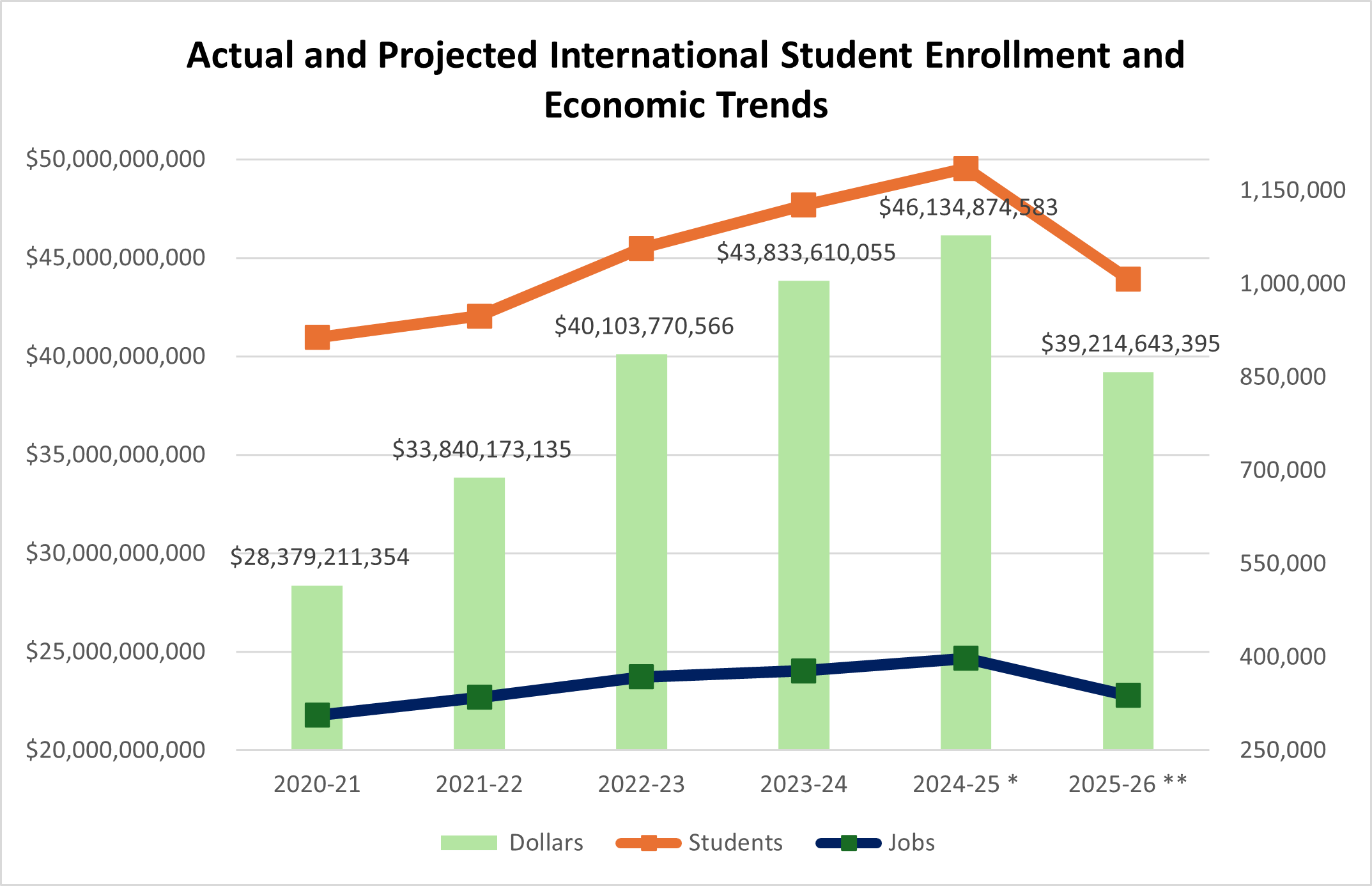Higher Education IN USA Faces International Student Challenge
Reduced International Enrollments Are Posing Serious Risks to Institutional Funding and Academic Diversity
🌍 The Global Decline in International Students
In recent years, the higher education sector has witnessed a concerning trend—reduced international enrollments. This decline is more than a temporary shift; it is a growing global challenge that directly affects universities’ financial stability and their ability to foster diverse, multicultural learning environments. Traditionally, international students have been an essential part of the higher education ecosystem, bringing with them significant tuition revenue, unique cultural perspectives, and academic talent. However, global crises such as the COVID-19 pandemic, rising tuition costs, restrictive visa policies, and geopolitical tensions have combined to slow international student mobility. According to UNESCO’s Global Flow of Tertiary-Level Students, the overall movement of international students declined by nearly 15% during the pandemic years, and many institutions are still struggling to recover.
For universities in countries like the United States, the United Kingdom, Canada, and Australia—where international students pay higher tuition fees compared to domestic students—this decline represents a financial shock. Institutions heavily dependent on global enrollments are now facing budget shortfalls, cuts in academic programs, and reduced investments in research. Beyond finances, fewer international students mean campuses lose out on cultural exchange and the diversity that enriches classroom discussions. This reduction weakens universities’ ability to provide a globally relevant education. For example, scholarships that once attracted thousands of foreign applicants are now seeing lower uptake, creating further barriers. ( Study Abroad Funding Guide)
💰 The Financial Risks to Institutional Funding
The financial consequences of reduced international enrollments are particularly severe. In many Western countries, international students contribute billions annually to local economies and institutional revenues. For instance, the U.S. Department of Commerce reported that international students added nearly $33 billion to the U.S. economy in 2021. Similarly, according to Times Higher Education, tuition fees from foreign students represent up to 25% of revenue for some UK universities. When international applications drop, the result is an immediate hit to institutional budgets, often leading to program closures, hiring freezes, or increased reliance on government funding.
This financial strain is not limited to tuition fees. Universities also lose out on secondary income generated through housing, food services, research partnerships, and alumni contributions. Moreover, many universities rely on international enrollment as a means of cross-subsidizing domestic student tuition, meaning local students indirectly benefit from foreign students’ higher payments. With reduced international enrollments, this balance is disrupted, and institutions may be forced to increase tuition fees for domestic students or cut scholarships.
Inbound scholarships play a vital role here. As highlighted on ScholarshipnToday, many global scholarships are designed to attract talent, yet fewer international students applying means universities miss out on both financial and intellectual capital. Without corrective measures, institutions risk long-term financial instability, reduced global competitiveness, and declining research output.
🎓 Impact on Academic Diversity and Campus Culture
Beyond finances, reduced international enrollments threaten academic diversity, which is one of the most powerful assets of any modern university. International students bring perspectives shaped by different cultural, social, and economic contexts, enriching classroom discussions and creating dynamic learning environments. For example, in fields like international relations, business, and public policy, a lack of global voices reduces the scope of debate, weakens critical thinking, and limits students’ exposure to diverse worldviews.
The impact also extends to faculty and research collaborations. Many professors rely on international graduate students for research assistance, joint publications, and innovation. With reduced enrollments, research capacity diminishes, particularly in STEM fields where international students make up a large proportion of graduate cohorts. According to World Education Services (WES), international students account for over 40% of graduate-level enrollment in U.S. engineering and computer science programs. A decline in these numbers could weaken innovation ecosystems globally.
Campus culture also suffers. University events, cultural associations, and international student groups lose membership, leading to a less vibrant community. Domestic students miss opportunities to engage with peers from different backgrounds, which is essential in preparing for global careers. Resources like the Top Scholarships for International Students in 2026 are critical to reversing this trend, but they must be promoted more widely to ensure global participation.
🛠️ Strategies Universities Can Adopt to Reverse the Trend
To address the risks posed by reduced international enrollments, universities and governments must adopt innovative strategies. First, scholarship programs should be expanded and better advertised to attract global talent. Many students are unaware of fully funded scholarships that cover flight tickets and living expenses, making outreach crucial. (Inbound link: Scholarships That Cover Flight Tickets + Living Expenses)
Second, universities must simplify admissions processes and improve visa support services. Streamlining documentation and reducing bureaucratic barriers can significantly increase enrollment rates. Third, digital transformation in education offers an opportunity. By providing hybrid or online study options, institutions can tap into international talent that cannot relocate physically but still seeks world-class education.
Collaboration with governments also plays a critical role. Policy reforms that provide post-study work opportunities, visa flexibility, and pathways to permanent residency can dramatically increase international enrollment. For instance, Canada’s student visa policies and post-graduation work permits have consistently boosted applications, making it a model worth replicating. Finally, building strong alumni networks and partnerships abroad can serve as recruitment channels, encouraging more students to choose institutions with a proven track record of supporting international talent.
📉 The Long-Term Risks if the Trend Persists
If the trend of reduced international enrollments continues, the long-term consequences for global higher education could be severe. Financially, institutions risk bankruptcy or forced mergers as funding gaps widen. This would not only reduce options for students but also diminish global research output and innovation. Academic diversity will decline further, leading to homogeneous learning environments that fail to prepare graduates for globalized job markets.
On a societal level, international education has historically been a soft-power tool, fostering cross-cultural understanding and diplomacy. With fewer international students, countries risk losing influence and cultural bridges built through global alumni networks. According to the OECD, international student mobility contributes significantly to global knowledge transfer, and its decline could limit collaboration on pressing global challenges like climate change, healthcare, and technology.
The solution lies in early intervention. Institutions must act swiftly to increase scholarships, improve support services, and build resilient recruitment systems. Resources like ScholarshipnToday can help students find opportunities, while governments and universities must create enabling environments. The cost of inaction is too high—both financially and academically.






